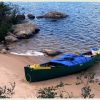2,700 Miles and Counting
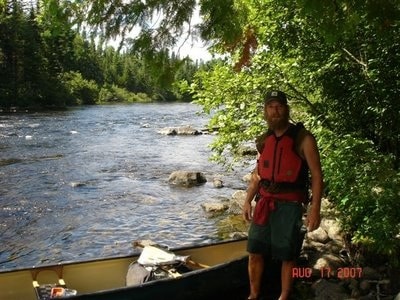
By Charlie Mahler, Contributor
Previously, Canoeing News noted Jason Bivin’s epic trip on which he attempted to hike the length of the Appalachian Trail and paddle all of the Northern Forest Canoe Trail in a single year. Bivin ended his journey in December, and after resting up a bit, answered some questions that our Canoeing.com contributor had for him about his unique trip.
What prompted this epic journey of yours?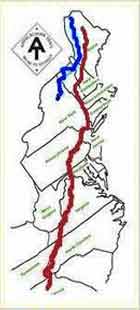
Jason Bivin: Thank you for taking an interest in my story and the time to ask these questions. I was attempting a thru-hike of the Pacific Crest Trail (PCT) and while at The Sauffley’s, a hostel, I read about the Northern Forest Canoe Trail (NFCT). This water trail was officially completed in the spring of 2006, the same time I was hiking the PCT. About this time a kid from Wisconsin was hiking around us and we spent some time talking about paddling. These talks got me thinking seriously about a future thru-paddle of the NFCT. It was spring time in Portland, OR, some friends were starting Appalachian Trail (AT), Continental Divide Trail and PCT thru- hikes, I was miserable with my job and my long term relationship I was ending. So I needed a change. After some consideration I began a preliminary plan to do both the AT and NFCT in one season, hoping to be the first to complete both. I would have been crazy not to do it. I announced my decision and began planning. Once I sat at the rock atop Springer Mountain, GA, the Southern Terminus of the Appalachian Trail, I never thought I would fail. It was on!
Where did you get your start as a paddler?
Jason Bivin: As a Boy Scout, I learned the fundamentals of paddling through merit badge classes while attending Boy Scouts Summer Camps. I would not say this is where I fell in love with paddling, however. While in Scouts, I would occasionally paddle on rivers, lakes and ponds. While attending school at Oklahoma State University, a friend, knowing that I was also an Eagle Scout, told me about Charlie Sommers Canoe Base up north of Ely, Minnesota. This was one of the Boy Scouts of America’s High Adventure bases. I contacted them and found that they needed Guides for the summer program.
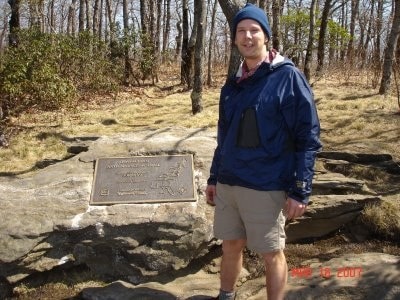
All Photos by Jason Bivin.
Once I sat at the rock atop Springer Mountain, GA, the Southern Terminus of the Appalachian Trail, I never thought I would fail. It was on!
The idea of being in a remote location, leading canoe trips and the opportunity to give something back to the Scouting program seemed like the greatest thing in the world. It wound up being just that. That summer I had the great opportunity to lead eight crews into both Minnesota’s Boundary Waters Canoe Area Wilderness and Ontario, Canada’s Quetico Provincial Water Park. This summer was so great and had such an impact on me that I immediately, following the summers end, moved to Minnesota. Charlie, as you know, the Boundary Waters are a very special place and hard to paddle through it without getting attached. In fact, my Last Will and Testament specifies that my ashes be spread across Lake Kekekabic, the deepest lake in the Boundary Waters.
Now that your trip’s completed, what do you think will be the enduring impact of it for you?
Jason Bivin: Well, Charlie, first I would say that it is not yet completed. Not totally 100% completed. I was not able to paddle some 160 miles of the 740 mile Northern Forest Canoe Trail. I did complete the 2,174 mile Appalachian Trail but there is still some work to complete. My plan is to wrap up the NFCT miles next spring. I did set out to be the first to thru-paddle the NFCT and thru-hike the AT in one season. I fell short of this accomplishment due to low water conditions on much of the NFCT and time, but still accomplished a great deal personally and more than 2,700 hiking and canoeing miles in eight and a half months.
 What will endure time will be the lessons I learned along the paddle, the experiences and the people. Some pretty amazing things take place in the wilderness and I had the privilege of seeing some of them this year. At a campsite in New Hampshire a black bear watched me eat dinner just several feet from where I sat by the campfire. While paddling down the Allagash River a bald eagle snatched a meal from the water just in front of my canoe, and once, a bull moose was enjoying breakfast so close to me that it might be considered we had breakfast together. What I learned about long distance paddling was brand new. I experienced white water river paddling, big open lake paddling and bog paddling for the first time along the NFCT in 2007. No matter where I landed, there were always great people in close proximity. Many folks helped along the trail, many friends and family helped from abroad. All of these people make the experience both possible and memorable.
What will endure time will be the lessons I learned along the paddle, the experiences and the people. Some pretty amazing things take place in the wilderness and I had the privilege of seeing some of them this year. At a campsite in New Hampshire a black bear watched me eat dinner just several feet from where I sat by the campfire. While paddling down the Allagash River a bald eagle snatched a meal from the water just in front of my canoe, and once, a bull moose was enjoying breakfast so close to me that it might be considered we had breakfast together. What I learned about long distance paddling was brand new. I experienced white water river paddling, big open lake paddling and bog paddling for the first time along the NFCT in 2007. No matter where I landed, there were always great people in close proximity. Many folks helped along the trail, many friends and family helped from abroad. All of these people make the experience both possible and memorable.
At a campsite in New Hampshire a black bear watched me eat dinner just several feet from where I sat by the campfire. While paddling down the Allagash River a bald eagle snatched a meal from the water just in front of my canoe, and once, a bull moose was enjoying breakfast so close to me that it might be considered we had breakfast together.
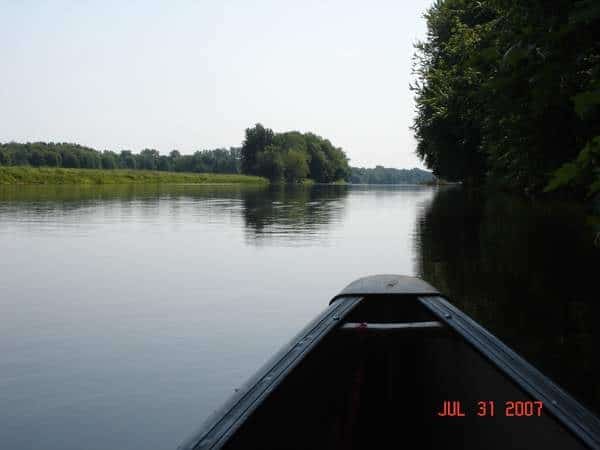
Tell us about the NFCT. Were you able to enjoy it or were you focused on making miles?
Jason Bivin: The Northern Forest Canoe Trail covers 740 miles. The trail begins in New York’s Adirondacks and winds through Vermont, Quebec, New Hampshire and ends in Ft. Kent, Maine along the St. John river. While paddling sections or the whole enchilada you will paddle up rivers, down rivers, through white water, lakes and ponds and through bog and marsh. Many of the water sources are connected through a system of portages. Some short, some longer, some through the woods, some along a road or around a dam. I could go on and on about the greatness of this trail and organization but really you should check them out for yourself at http://www.northernforestcanoetrail.org.
I was very much able to enjoy the trail, the water, the flora and fauna, the sounds of the woods. Eventually and towards the end, making miles did notch the top of my priority list. And this was the case because of my two-fer adventure of thru-hiking the Appalachian Trail and thru-paddling the NFCT in 2007. Time became a premium and valuable time was lost reacting to conditions. When making miles, I still took time to watch and listen. Since the wildlife intensified the further North I paddled I really made a point to notice my surroundings intently.
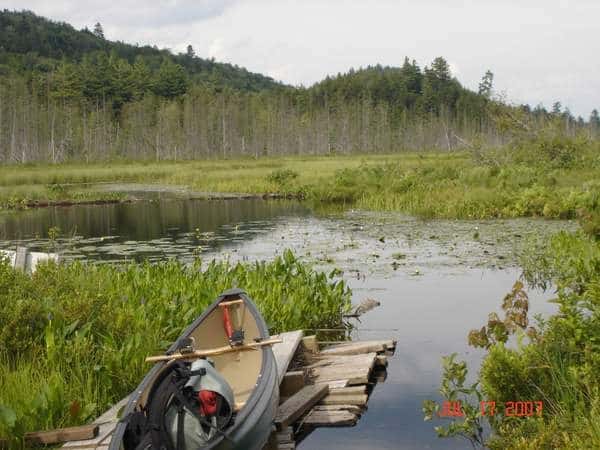 What was the most harrowing or difficult moment on the journey?
What was the most harrowing or difficult moment on the journey?
Jason Bivin: This is a great question and my favorite to answer. From this experience I learned my greatest lessons. Being lost was my worst and yet greatest reality. I took a wrong turn while paddling downstream on the Clyde River and wound up paddling deep into a bog, where it proved impossible for me to ascertain my location by map or navigation. Each turn in an ever narrowing channel left me further from the trail. I spent a great deal of this time stressed out and improvising and thinking and worrying. Ultimately, I found my way. All of my “know how” and “know not” came together in this moment. It was terrifying, understanding that the smallest mistake or wrong decision could prove disastrous. Staying, attempting to stay, upbeat was of major importance in dealing with the situation at hand. Handling this task with success meant enduring the ever present and drastic highest highs and lowest lows. Considering failure to find the trail meant disaster, this, running through my head, motivated me to make successful decisions.
All of my “know how” and “know not” came together in this moment. It was terrifying, understanding that the smallest mistake or wrong decision could prove disastrous. Staying, attempting to stay, upbeat was of major importance in dealing with the situation at hand.
What was your outfit—boat, paddles, gear—for the paddling stage?
Jason Bivin: I love gear and could spend several days discussing but for everyone’s sake, I’ll keep my response simple. First of all, I owe a great deal of thanks to the following folks for their help with gear selection and delivery. Steve Piragis of Piragis Northwoods Company, Ely, MN, Dave Cilley of St. Regis Canoe Outfitters, Saranac Lake, NY and the Gang at MountainMan Outdoor Supply Co., Old Forge, NY. These folks are experts in their field of fun and would be happy to hear from you.
For the gear…
CANOE: Bell Yellowstone Solo 14 ft.
PADDLE: 1 bent Sawyer and 1 aluminum Carlisle Paddle
PORTAGE PACK: Granite Gear Solo, 4,000 cubic in.
SLEEPING BAG: Marmot Pounder 40 degree synthetic
SLEEPING PAD: Thermarest ProLite 4
TENT: MSR Hubba, Tyvek Groundcloth
STOVE: Etowah Outfitters Alcohol
COOKWARE: GSI 1.5 qt. pot and lexan spoon
PFD: Astral Kapoc (Type III pfd)
SHOES: Keen water sandals
HAT: Filson oil canvas
CLOTHES:
North Face Hyvent Rainjacket
EMS rainpants
Patagonia Capilene long johns
Patagonia down jacket
1 pair socks,
camp shorts,
synthetic stocking cap.
STUFF SACK/DRY BAGS: Seal Line 40 litre dry bag (packliner), Etowah Outfitters nylon multifunction,
2 Sea to Summit dry bags (2 ltr and 4 ltr)
Pelican 1040 and 1030 DryPak
THWART BAG: Granite Gear small
CAMERA: Sony Cybershot 5 MPXL and battery charger
HANDHELD DEVICES: Cingular cell phone and battery charger and Pocketmail
WATER PURIFICATION: Iodine tabs
MISC: First Aid Kit, Deet, Dr. Bronner soap, tobacco, rope, toothbrush, toothpaste, maps, Seal Line map case, comb, nail clippers and Swiss Army Camper knife
Everything I used worked well. I lost some of what I started with, like hats, paddles, headlamps, lighters, water bottles, etc. These companies make some great gear!
Where do you want to paddle a canoe next?
Jason Bivin: Because of this long distance paddle, this year, a ton of doors just opened. There are great places I discover all the time that I would love to experience. For now, I would love to finish up the NFCT miles missed this year. Once finished, I badly want to spend several weeks in Minnesota’s Boundary Waters and Ontario, Canada’s Quetico Provincial Park.
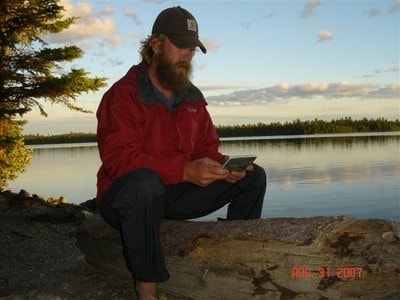
Did being unable to complete the canoe journey, albeit due to low water conditions, set you back at all mentally for the rest of the trip?
Jason Bivin: Charlie, I am not afraid to fail. I knew what the odds were but to not go for it would have stung far more than failing to achieve my specific goal of becoming the first person to complete both a thru-hike along the Appalachian Trail and a thru-paddle along the waters of the Northern Forest Canoe Trail. Teddy Roosevelt’s speech, from April 1910 delivered at the Sorbonne, sums up precisely how I felt then, and now, about not being able to complete every mile by water.
“The credit belongs to the man who is actually in the arena, whose face is marred by dust and sweat and blood; who strives valiantly; who errs, who comes short again and again, because there is no effort without error and shortcoming; but who does actually strive to do the deeds; who knows great enthusiasms, the great devotions; who spends himself in a worthy cause; who at the best knows in the end the triumph of high achievement, and who at the worst, if he fails, at least fails while daring greatly, so that his place shall never be with those cold and timid souls who neither know victory nor defeat.”
It is hard trudging forward when you are sure you will not achieve your specific goal. How could I stop though?
So, no, Charlie, not being able to complete all 740 miles of the Northern Forest Canoe Trail didn’t set me back mentally. What I saw and learned from the paddle was priceless and I was able to keep this fact at the front of my thoughts. I also knew that there was still plenty of adventure and experience down the trail. It was while I was in Maine that I decided to continue paddling towards Ft. Kent, Maine even though I knew that there would be 100 some miles left behind. Day dreams of Mt. Katahdin, and New Hampshire’s White Mountains kept my paddle in the water. For soon, I would be atop Mt. Katahdin, ME heading towards Delaware Water Gap, PA, and the end of my second thru-hike along the Appalachian Trail.
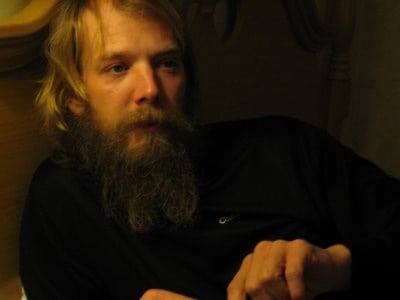 It is hard trudging forward when you are sure you will not achieve your specific goal. How could I stop, though? The most beautiful part of the country along this paddle is in Maine and I had already paid for this pleasure through tough portages, windy conditions and low water levels, etc.
It is hard trudging forward when you are sure you will not achieve your specific goal. How could I stop, though? The most beautiful part of the country along this paddle is in Maine and I had already paid for this pleasure through tough portages, windy conditions and low water levels, etc.
What I accomplished, solo, with this paddle, has been priceless. Combined with my successful completion of the Appalachian Trail, it has been my single greatest achievement. I fumbled my way through small NFCT towns not quite suitable for the thru-paddler, endured long, wet, unmaintained or unmarked portages, and nursed a Class II ankle sprain through New Hampshire’s snow laden White Mountains. Yet, never did I consider my experience a failure. My story should not be about failure, but rather strength and determination and will and faith.



